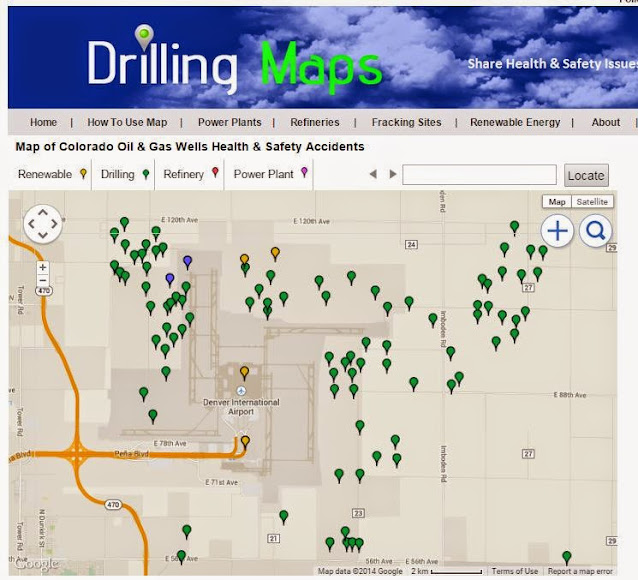Denver, Colorado Airport Oil & Gas Wells Surround The Airport
Have you ever flown into Denver and wondered about all the oil and gas wells surrounding the airport? We have mapped them using Google Satellite images. How many of these wells are being fracked? What effect do these wells have on the surrounding community's air quality? Zoom into the airport using our Colorado Oil and Gas Wells Map.Denver International Airport (DIA) plans to permanently plug 64 idle oil and gas wells as part of its environmental sustainability plan. The airport plans to hire a contractor to plug the wells by late 2023 or early 2024.
The plugging process involves setting mechanical or cement plugs in the wellbore at specific intervals to prevent fluid flow. The process usually requires a workover rig and cement pumped into the wellbore. The plugging process can take two days to a week, depending on the number of plugs to be set in the well.
An oil or gas well is plugged and abandoned when it reaches the end of its useful life or becomes a dry hole. These operations include activities and tasks that present hazards to workers.
The airport holds 76 oil and gas wells on its property, The airport generated $7M in oil revenue back in 2010.
